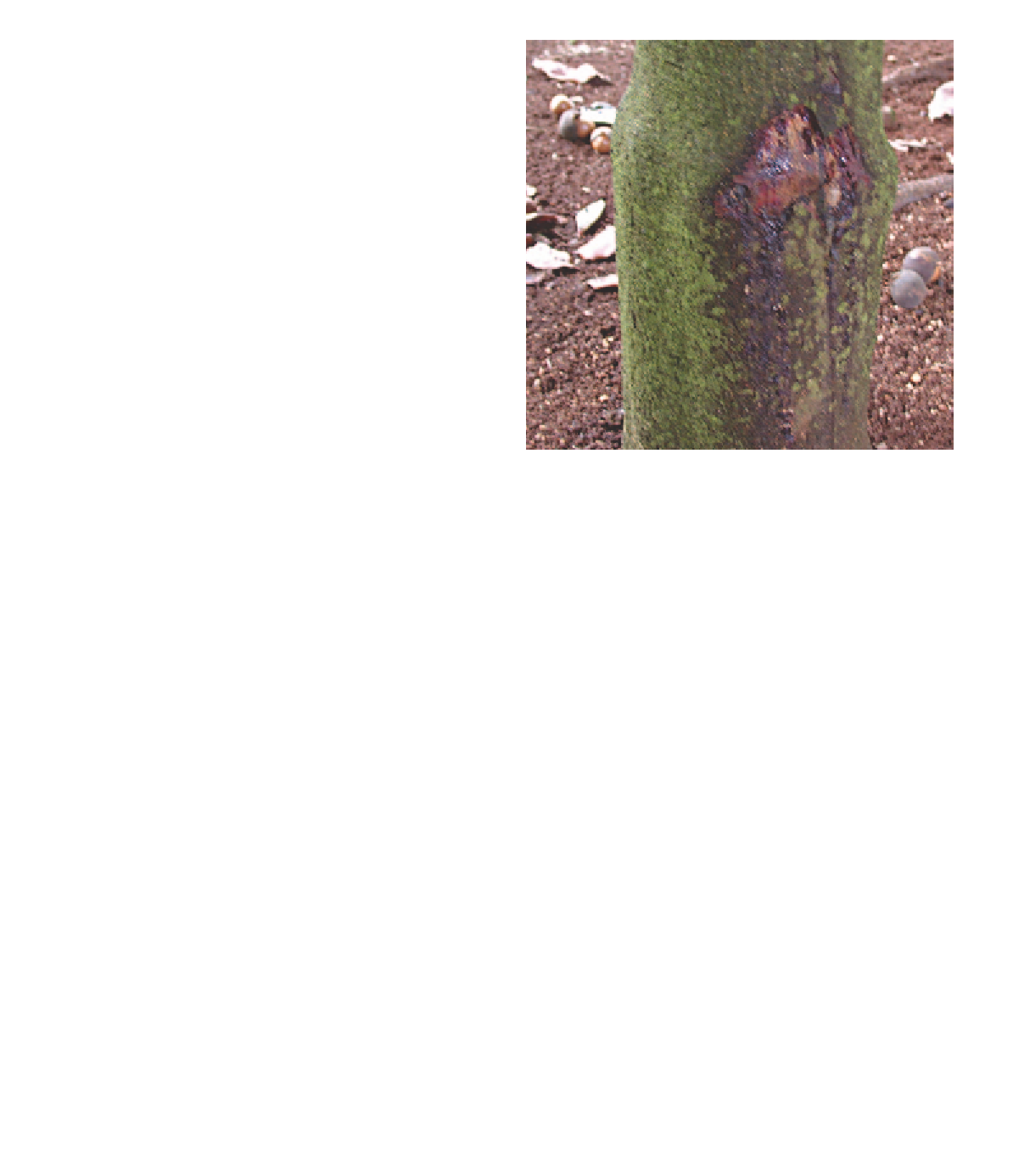Agriculture Reference
In-Depth Information
Fig 11.8 Raceme blight caused by
Botrytis cinerea
. This shows the
bud blight phase; the disease can develop rapidly and cover the
entire raceme.
months. Botrytis is extremely common on old f flower parts
and decaying vegetation. Spores are dispersed by wind.
Infection and disease development are favoured by cool,
wet weather. The disease is restricted by warm, dry days
during winter and spring months, when the major
flowering period occurs.
Fig 11.9 A mature macadamia tree affected by trunk canker.
brown discolouration of the outer wood is visible. As the
disease progresses, deep furrowed cankers and irregular
areas of dead bark may extend from ground level to the
lower branches. Infected trees often set a heavy crop of fruits
in the final stages of the disease. Healthy suckers may arise
from rootstocks of plants with severely affected scions.
Importance
Generally, raceme blight is a minor disease but can cause
severe failure in fruit set if prolonged periods of showery
weather occur during the f flowering period.
Source of infection and spread
The oomycete causing trunk canker is a soil-borne
organism that requires free water for spore production and
root infection. It also invades trees through trunk wounds
near ground level. The pathogen is often associated with
rootlet death, even on trees that appear healthy.
Management
Fungicide applications are generally not necessary, because
diseased f florets are not retained on the raceme, and even
under ideal conditions only a low percentage of f florets
develop into mature fruit. A high disease impact is
associated with showery weather conditions, which
promote disease and hinder fungicide application.
Phytophthora cinnamomi
also infects pineapple, avocado
and many native plants.
Importance
Phytophthora trunk and stem canker is an important
disease, particularly of young trees in the nursery and for
the first few years after planting. The role of Phytophthora
in general decline in aging orchards is unclear. Heavy crop
loss may occur in mature trees under conditions of
prolonged and severe water stress.
PHYTOPHTHORA TRUNK AND
STEM CANKER
Cause
The oomycete
Phytophthora cinnamomi
.
Symptoms
On nursery stock and in young plantation trees, affected
plants are stunted, chlorotic and partially defoliated. Plants
die if the stem is girdled. Extensive discolouration of the
cambium beneath the bark is usually observed. In mature
trees, dark discolouration of the bark at the base of the trunk
develops, often with gum exudation. If this bark is removed,
Management
•
Plant disease-free nursery trees.
Minimise waterlogging by planting trees with a slight
mounding around the trunk rather than in a depression.
•
Avoid wounding trunks.
•












